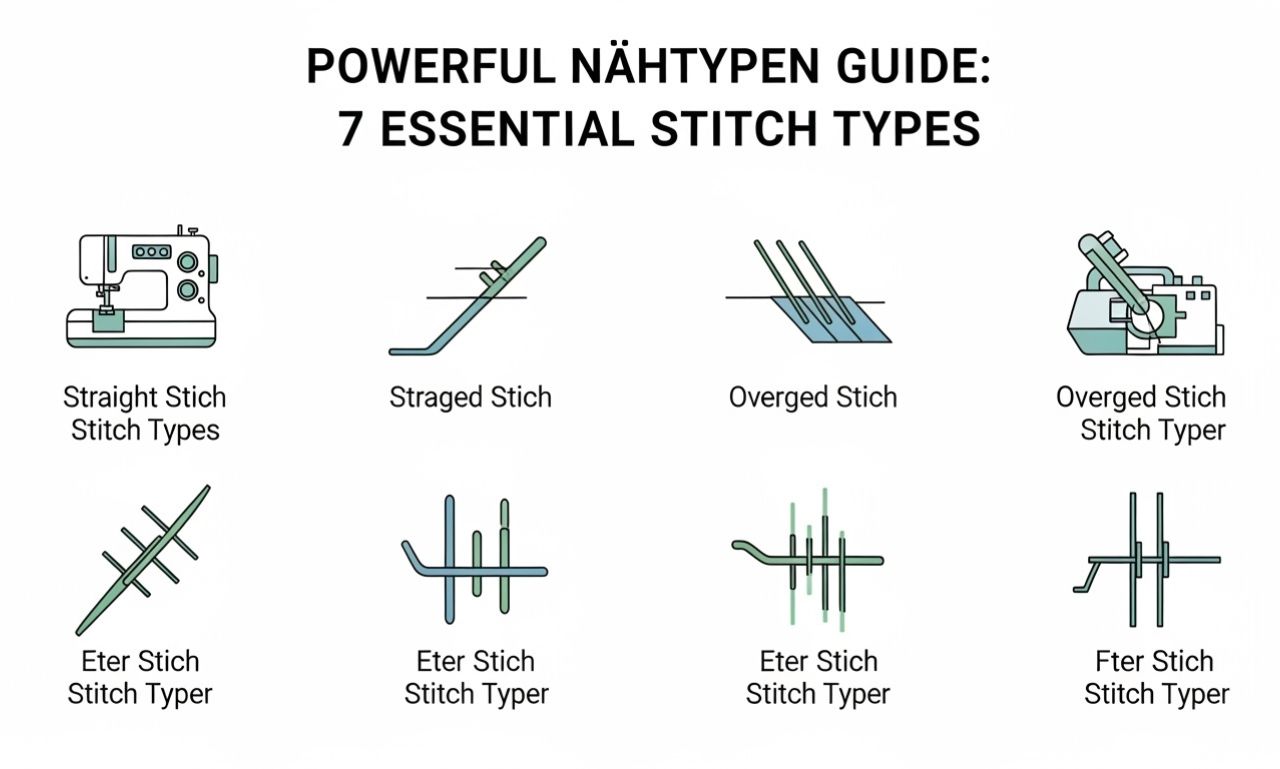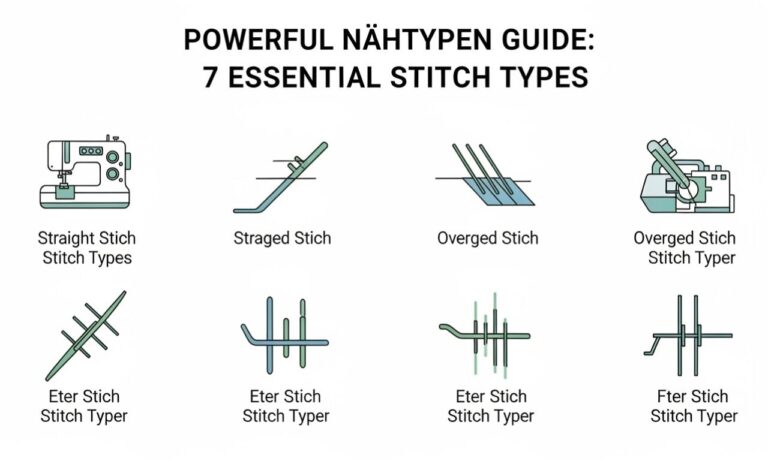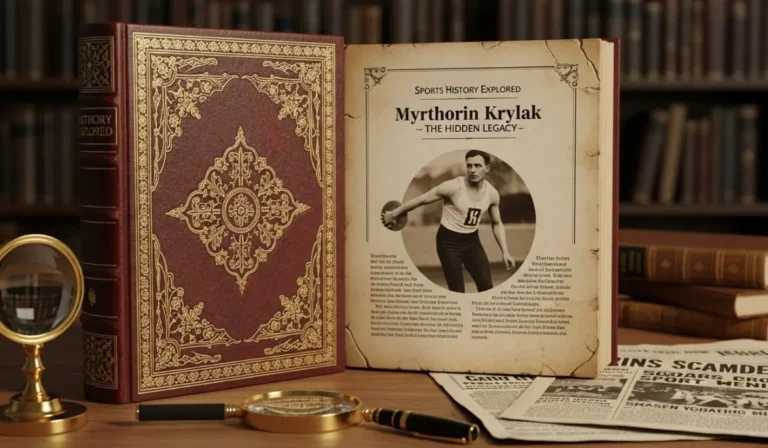
The term nahttypen describes the wide variety of stitch types used in sewing, tailoring, and fabric construction. Many beginners and experienced creators rely on nahttypen to shape clothing, reinforce seams, and add decorative touches.
Because the quality of sewing largely depends on the type of stitch used, nahtypen play an essential role in ensuring that garments stay strong, attractive, and long-lasting. In this complete guide, you will learn about the importance, history, functions, tools, and uses of nahtypen through simple explanations and practical insights.
Understanding naht type
Naht type refers to sewing stitch types that join fabrics together, finish edges, or add decorative elements. These stitches vary widely based on the project, fabric, and tools.
Why nahttypen Matter
Different stitches create different levels of strength, flexibility, and appearance. Choosing the right naht type helps garments maintain structure and comfort.
History of naht type
Naht type have existed since ancient civilizations began stitching animal skins and woven cloths. Early stitches were made by hand using bone needles, while modern techniques evolved with sewing machines.
Evolution Through Time
As fabrics changed, so did naht type—resulting in stronger, faster, and more decorative options.
Importance of nahttypen in Sewing
Every garment relies on proper naht type for durability. Without strong stitching, fabric pieces would pull apart when stretched or washed.
Key Roles
-
Creating shape
-
Holding seams together
-
Finishing edges
-
Enhancing aesthetics
Types of naht type
There are many categories of nahttypen, but they typically fall into three groups:
-
Functional stitches
-
Reinforcement stitches
-
Decorative stitches
Each category serves its own purpose depending on the fabric and design.
Straight naht type
The straight stitch is the most common nahttypen. It creates a clean, direct line and works well on woven fabrics.
Best Uses
-
Hemming
-
Seam construction
-
Topstitching
Zigzag naht type
This naht type stretches and moves with fabric, making it ideal for knitwear.
Benefits
-
Adds stretch
-
Prevents fraying
-
Reinforces weak edges
Overlock naht type
Overlock stitches use multiple threads to bind edges and prevent unraveling.
Common Applications
-
T-shirt edges
-
Activewear
-
Fabric finishing
Flatlock naht type
Flatlock nahttypen create flat seams, often used in sportswear where comfort matters.
Advantages
-
Reduces rubbing
-
Improves flexibility
French naht type
This seam encloses raw edges, creating a clean interior finish.
Ideal Fabrics
-
Chiffon
-
Silk
-
Lightweight cotton
Double naht type
This naht type offers extra strength, making it great for jeans and workwear.
Why It Works
Two rows of stitching protect high-stress points.
Blind naht type
A blind hem stitch hides the sewing line, making it almost invisible.
Typical Uses
-
Formal trousers
-
Dress hems
-
Curtains
Hand-sewn naht type
Although slower, hand-sewn naht type allow greater control and detail.
Examples
-
Slip stitch
-
Ladder stitch
-
Running stitch
Machine-naht type
Machine naht type offer speed and consistency.
Popular Stitches
-
Straight
-
Stretch
-
Decorative patterns
naht type for Beginners
Beginners can start with simple stitches like straight and zigzag naht type.
Tips for Learning
-
Practice on scrap fabric
-
Adjust tension
-
Keep stitch lengths moderate
naht type for Tailoring
Tailors rely on precise naht type for structure and elegance.
Tailoring Essentials
-
Basting
-
Topstitching
-
Invisible hems
naht type in Fashion Design
Designers use a mix of naht type for style, texture, and shape.
Creative Influence
Stitches can change the entire look of a garment.
nahttypen in Home Projects
Home crafters use naht type for curtains, cushions, and quilts.
Practical Benefits
-
Strength
-
Clean edges
-
Style accents
nahttypen for Repairs
Repair work often requires specific naht type depending on the problem.
Examples
-
Re-stitching torn seams
-
Repairing hems
-
Fixing open edges
Common Mistakes in naht type
Several errors can weaken seams.
Mistakes to Avoid
-
Wrong thread tension
-
Unsuitable stitch length
-
Using the wrong needle
Tools Needed for naht type
Essential tools include:
-
Needles
-
Threads
-
Sewing machines
-
Fabric scissors
Having the right tools improves the quality of nahttypen.
Fabrics Suitable for nahttypen
Different fabrics require different stitches.
Examples
-
Knits → zigzag
-
Denim → double seams
-
Silk → French seams
Strength Testing of naht type
Testing ensures each naht type holds up under pressure.
Methods
-
Pull tests
-
Stretch tests
-
Wash durability checks
Decorative nahttypen
Decorative stitches add personality and artistry.
Uses
-
Embellishments
-
Borders
-
Handcrafted designs
Expert Opinions on naht type
Professional tailors emphasize that choosing the right naht type prevents seam failure and improves garment lifespan.
Final Thoughts
The world of nahttypen is rich, practical, and creative. Understanding different stitch types helps you sew with confidence, whether you’re making clothing, home décor, or custom projects. With the right tools and knowledge, naht type bring your ideas to life with precision and beauty.





